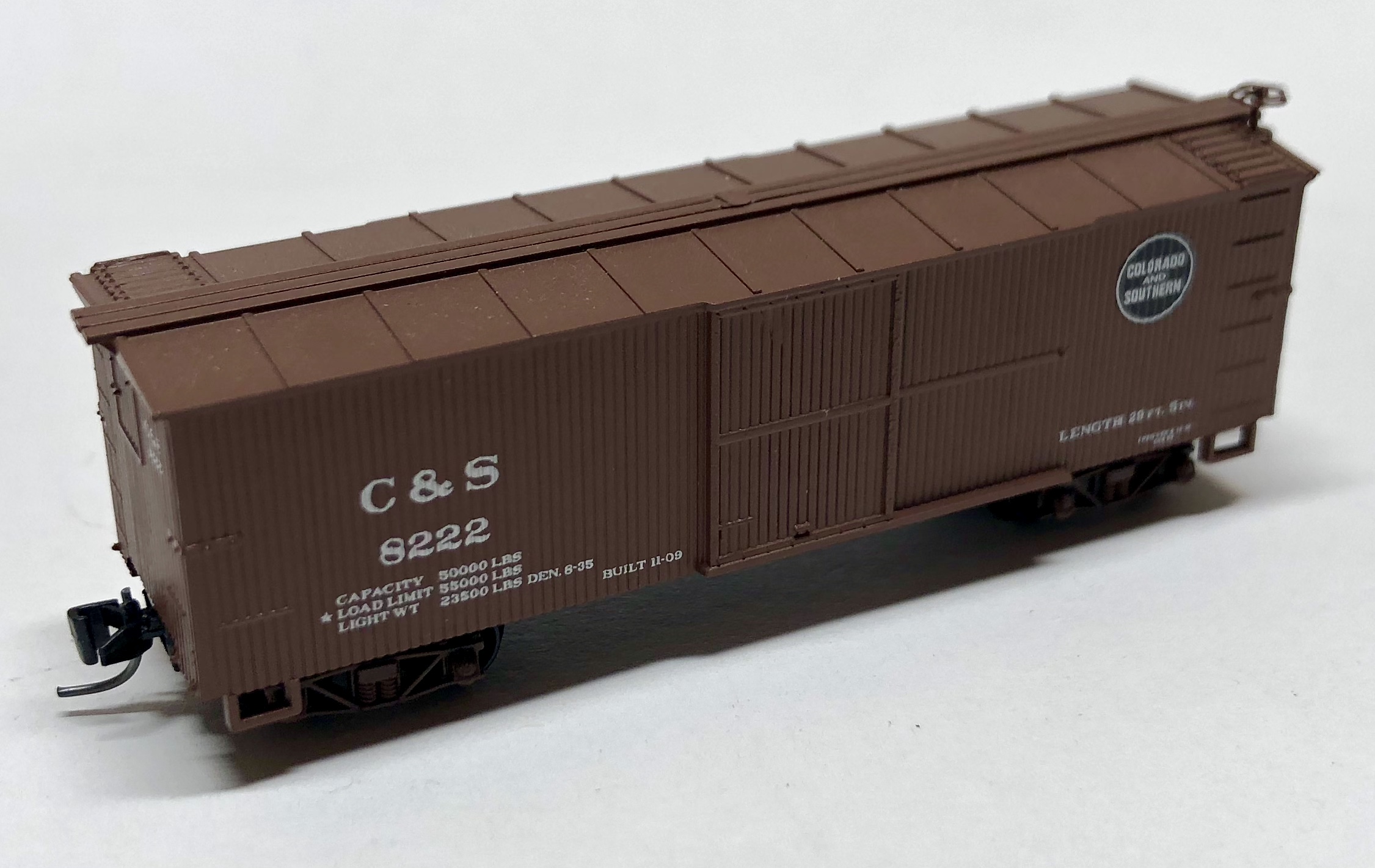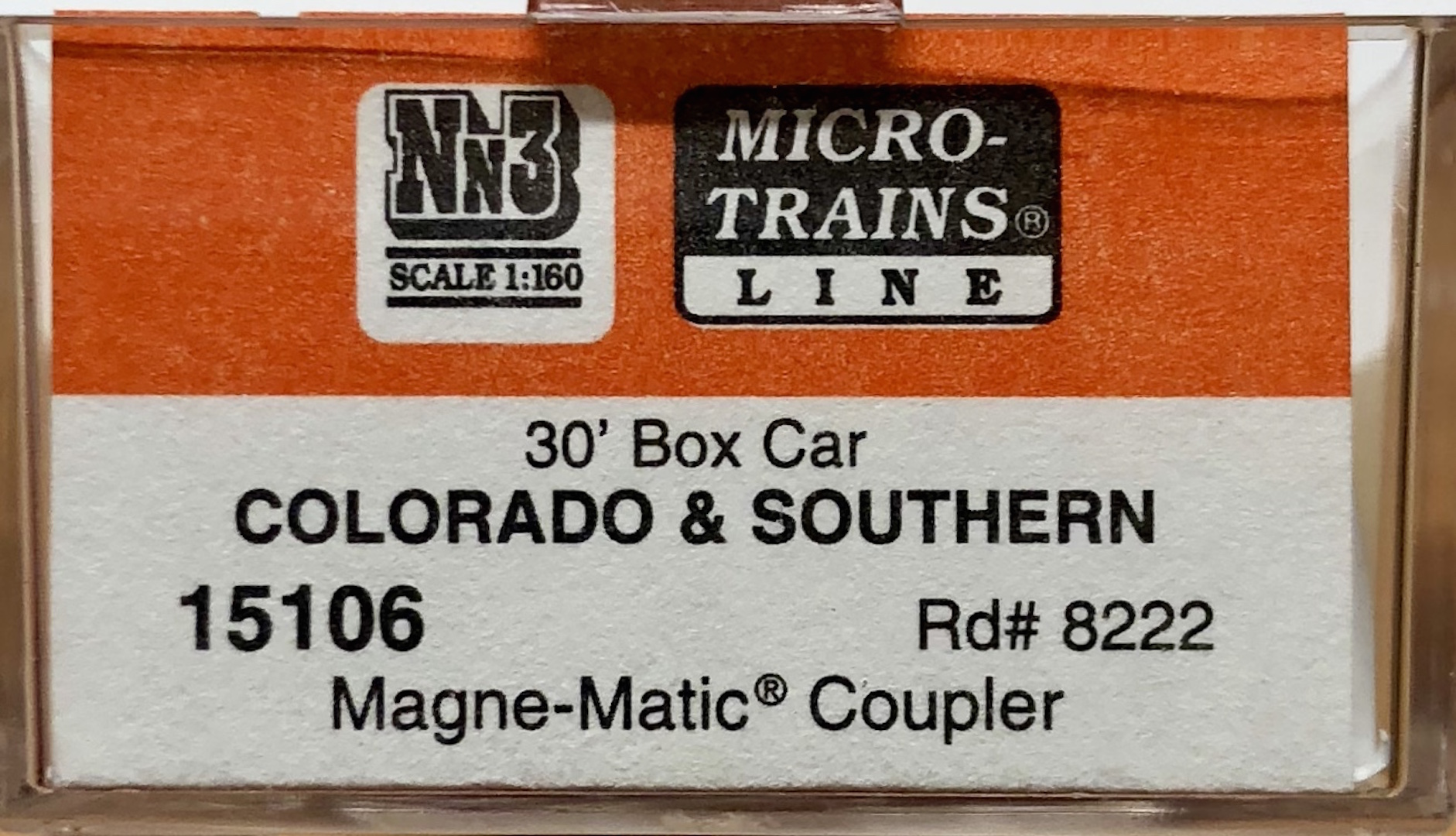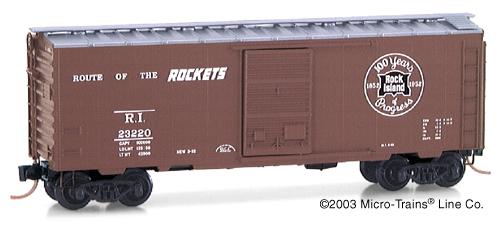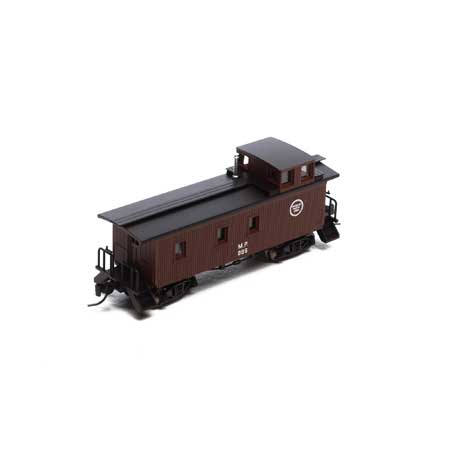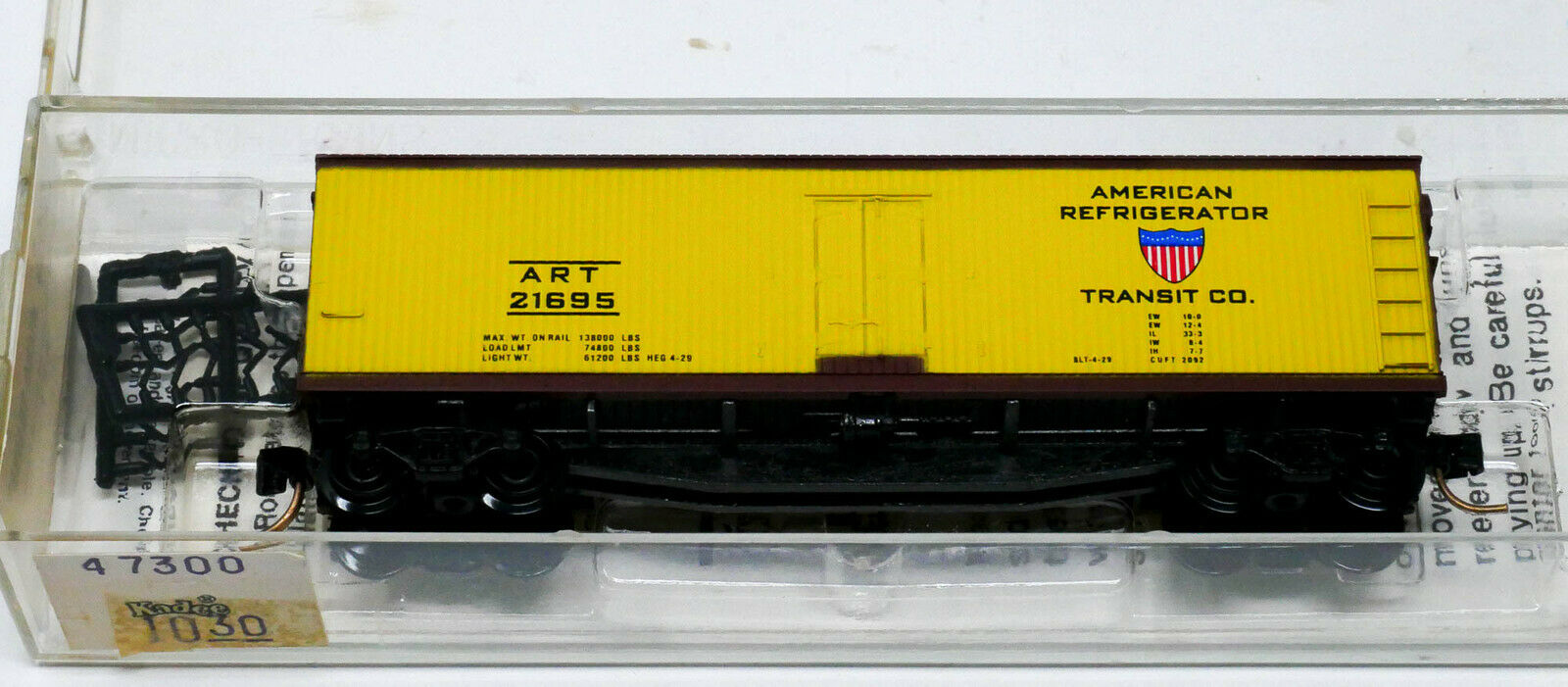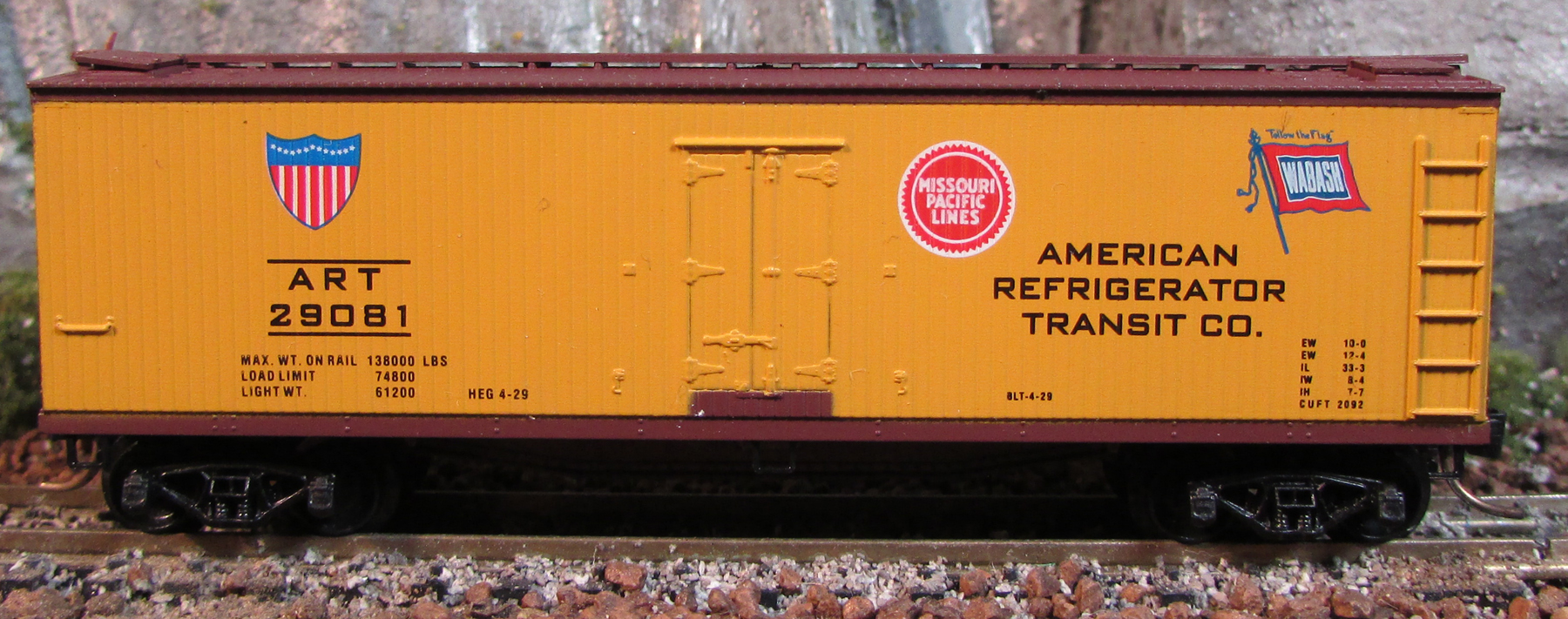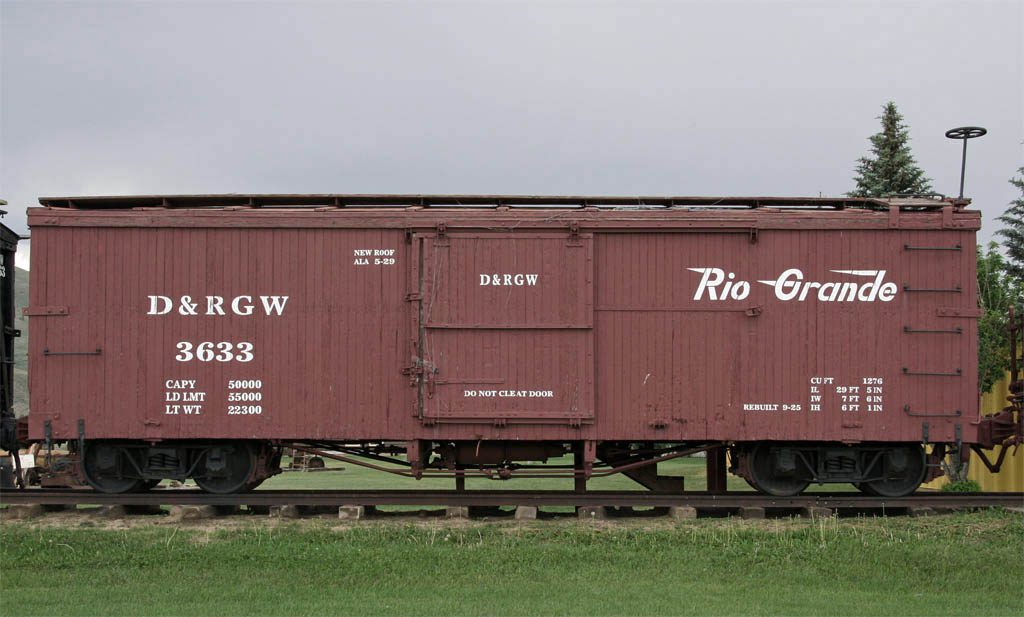Model Information: Micro-Trains introduced a Nn3 narrow gauge range in 1988 that includes a 30' boxcar, a 30' gondola, a 30' flat car and a caboose. The models are re-run occasionally since then.
Prototype History: A class of 750 boxcars, 30ft long and with a capacity of 25 tons, has been delivered to the D&RG by the American Car & Foundry in 1904; they were numbered from 3000 to 3749. In 1926, these boxcars were extensively rebuilt, keeping only a few iron parts from the original boxcars, but the new cars retained the same numbers. A large part of these boxcars remained in revenue service until the end of freight operations on the Rio Grande narrow gauge in 1968. Many boxcars of this class have been preserved today, including 45 on the Durango & Silverton Narrow Gauge Railroad, about twenty in their original condititon on the Cumbres & Toltec Scenic Railroad (plus 22 other converted to passenger cars), 9 at the Georgetown Loop Railroad and another 4 at the Colorado Railroad Museum. All the Rio Grande boxcars were completely made of wood (body and frame), except for numbers 3000-3749 which received a steel roof during their 1926 rebuilding.
Road Name History: 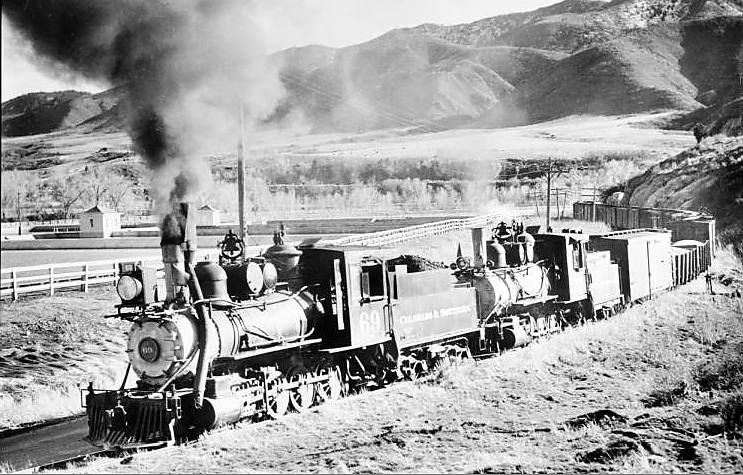 C&S was formed in 1898 with the consolidation of the Union Pacific Denver & Gulf and the Denver Leadville & Gunnison, both of whom had been under the control of Union Pacific prior to falling into receivership. C&S was best known for their 3’ gauge lines built westward from Denver by the Colorado Central (the so called “Clear Creek Lines” to Black Hawk, Central City, and Georgetown including the famous Georgetown Loop) and the Denver South Park & Pacific (southwest to Como, Climax, Leadville and for a short time, Gunnison.) However, the narrow gauge portion was a small fraction of the Colorado & Southern system.
C&S was formed in 1898 with the consolidation of the Union Pacific Denver & Gulf and the Denver Leadville & Gunnison, both of whom had been under the control of Union Pacific prior to falling into receivership. C&S was best known for their 3’ gauge lines built westward from Denver by the Colorado Central (the so called “Clear Creek Lines” to Black Hawk, Central City, and Georgetown including the famous Georgetown Loop) and the Denver South Park & Pacific (southwest to Como, Climax, Leadville and for a short time, Gunnison.) However, the narrow gauge portion was a small fraction of the Colorado & Southern system.
The standard gauge portion started from a point north of Wendover, Wyoming south through Cheyenne, Denver, Colorado Springs, Pueblo, Trinidad and on to Texline on the New Mexico – Texas border. There they connected with their subsidiary Fort Worth & Denver City Railway to Fort Worth and other Texas cities. C&S also controlled the Trinity & Brazos Valley which gave them friendly connections all the way to the port of Galveston. (We’ll cover the FW&D, T&BV and other C&S subsidiaries on future RRotD’s.) The mainline also included the famous “joint line” used by C&S, Santa Fe, and Rio Grande between Denver and Pueblo.
In 1908, Chicago Burlington & Quincy (who connected with C&S in Denver, Cheyenne and Wendover) bought about two thirds of C&S shares and took control. CB&Q was jointly controlled by Great Northern and Northern Pacific and the goal was to secure a through route from the Pacific Northwest to the Gulf of Mexico. C&S adopted CB&Q practices for steam locomotive designs and before long the “Burlington Route” shield appeared on tenders but with C&S lettering on the cabs. Other than that, C&S and FW&D were left to manage their own affairs to a large extent.
In 1937, the old South Park narrow gauge mainline was abandoned leaving only a short stub between Climax and Leadville to connect a molybdenum mine to a standard gauge Rio Grande branch. Four years later, the Clear Creek lines were abandoned and the Climax branch was standard gauged bringing an end to all C&S narrow gauge operations. The Climax branch would go on to host the last regular standard gauge freight service with a steam locomotive by a Class 1 railroad. 2-8-0 #641 would last drop its fire on October 11, 1962.
C&S pressed on through the diesel era with locomotives in CB&Q and later successor Burlington Northern paint but sub-lettered for C&S. Colorado & Southern was finally merged into Burlington Northern on the last day of 1981.

The standard gauge portion started from a point north of Wendover, Wyoming south through Cheyenne, Denver, Colorado Springs, Pueblo, Trinidad and on to Texline on the New Mexico – Texas border. There they connected with their subsidiary Fort Worth & Denver City Railway to Fort Worth and other Texas cities. C&S also controlled the Trinity & Brazos Valley which gave them friendly connections all the way to the port of Galveston. (We’ll cover the FW&D, T&BV and other C&S subsidiaries on future RRotD’s.) The mainline also included the famous “joint line” used by C&S, Santa Fe, and Rio Grande between Denver and Pueblo.
In 1908, Chicago Burlington & Quincy (who connected with C&S in Denver, Cheyenne and Wendover) bought about two thirds of C&S shares and took control. CB&Q was jointly controlled by Great Northern and Northern Pacific and the goal was to secure a through route from the Pacific Northwest to the Gulf of Mexico. C&S adopted CB&Q practices for steam locomotive designs and before long the “Burlington Route” shield appeared on tenders but with C&S lettering on the cabs. Other than that, C&S and FW&D were left to manage their own affairs to a large extent.
In 1937, the old South Park narrow gauge mainline was abandoned leaving only a short stub between Climax and Leadville to connect a molybdenum mine to a standard gauge Rio Grande branch. Four years later, the Clear Creek lines were abandoned and the Climax branch was standard gauged bringing an end to all C&S narrow gauge operations. The Climax branch would go on to host the last regular standard gauge freight service with a steam locomotive by a Class 1 railroad. 2-8-0 #641 would last drop its fire on October 11, 1962.
C&S pressed on through the diesel era with locomotives in CB&Q and later successor Burlington Northern paint but sub-lettered for C&S. Colorado & Southern was finally merged into Burlington Northern on the last day of 1981.
Brand/Importer Information: Micro-Trains is the brand name used by both Kadee Quality Products and Micro-Trains Line. For a history of the relationship between the brand and the two companies, please consult our Micro-Trains Collector's Guide.
Manufacturer Information:  Micro-Trains Line split off from Kadee Quality Products in 1990. Kadee Quality Products originally got involved in N-Scale by producing a scaled-down version of their successful HO Magne-Matic knuckle coupler system. This coupler was superior to the ubiquitous 'Rapido' style coupler due to two primary factors: superior realistic appearance and the ability to automatically uncouple when stopped over a magnet embedded in a section of track. The success of these couplers in N-Scale quickly translated to the production of trucks, wheels and in 1972 a release of ready-to-run box cars.
Micro-Trains Line split off from Kadee Quality Products in 1990. Kadee Quality Products originally got involved in N-Scale by producing a scaled-down version of their successful HO Magne-Matic knuckle coupler system. This coupler was superior to the ubiquitous 'Rapido' style coupler due to two primary factors: superior realistic appearance and the ability to automatically uncouple when stopped over a magnet embedded in a section of track. The success of these couplers in N-Scale quickly translated to the production of trucks, wheels and in 1972 a release of ready-to-run box cars.
Micro-Trains Line Co. split off from Kadee in 1990 to form a completely independent company. For this reason, products from this company can appear with labels from both enterprises. Due to the nature of production idiosyncrasies and various random factors, the rolling stock from Micro-Trains can have all sorts of interesting variations in both their packaging as well as the products themselves. When acquiring an MTL product it is very important to understand these important production variations that can greatly enhance (or decrease) the value of your purchase.
Please consult our Micro-Trains Collector's Guide

Micro-Trains Line Co. split off from Kadee in 1990 to form a completely independent company. For this reason, products from this company can appear with labels from both enterprises. Due to the nature of production idiosyncrasies and various random factors, the rolling stock from Micro-Trains can have all sorts of interesting variations in both their packaging as well as the products themselves. When acquiring an MTL product it is very important to understand these important production variations that can greatly enhance (or decrease) the value of your purchase.
Please consult our Micro-Trains Collector's Guide
Item created by: grothe77 on 2020-07-05 20:03:07. Last edited by Alain LM on 2020-07-16 14:04:41
If you see errors or missing data in this entry, please feel free to log in and edit it. Anyone with a Gmail account can log in instantly.
If you see errors or missing data in this entry, please feel free to log in and edit it. Anyone with a Gmail account can log in instantly.


